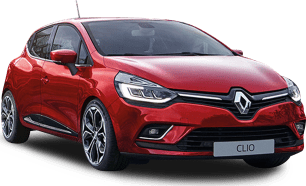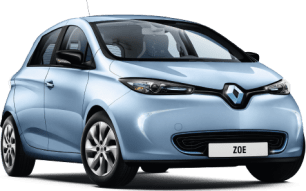Some believe cars have a soul, but the Renault Zoe expresses its feelings with a distinctive accent, the car's 'Z.E. Voice' function giving an audible warning to pedestrians up to 30km/h (when wind and tyre noise take over).
The whirring hum sounds like The Beach Boys warming up the theremin for a rendition of 'Good Vibrations'. Spooky and fun in equal measure.
Like all electric cars the Renault Zoe accelerates quickly from rest, thanks to the motor's ability to deliver maximum torque (225kW) from step off.
At 1480kg (battery 305kg) the Zoe is 177kg lighter than an equivalent Clio, so it's snappy in its natural city habitat, but thrust begins to taper off markedly around the 55-60km/h mark.
The single-speed, reduction gear automatic transmission combines with the motor's sewing-machine smoothness to provide close to perfect drive delivery.
Sitting on the same 'B platform' as the Clio (and 20 other Renault–Nissan–Mitsubishi Alliance models) the Zoe features a strut front, beam rear suspension set-up.
Ride comfort is surprisingly good for such a small hatch, and the battery's location under the floor sets up a centre of gravity 35mm lower than the Clio's, so despite a 59 per cent front/41 per cent rear weight distribution, the car feels well planted in corners.
...the dash graphic – a blue AA-style battery surrounded by rising rings of energy – is reminiscent of 'the machine man' animating in Fritz Lang's Metropolis.
The standard 16-inch alloy wheels are shod with Michelin Energy E-V low-rolling-resistance tyres (195/55), which won't win you pole on a qualifying lap, but are commendably quiet.
There are three driving modes, with the dash graphics aligning to each – Eco (green), Neutral (blue), and Dynamic (violet).
But ECO mode should be reserved for hardcore environmental warriors only. Press the console-mounted button and power from the motor is reduced and air-con output is limited.
It may increase range by a claimed 10 per cent, but what price your sanity? This setting sucks out the car's will to live, and thankfully a second press of the button or pinning the throttle pedal to the floor sees full-strength service resumed. Phew.
The regenerative deceleration and braking system distributes braking force between the clamping of the brake pads and the engine on over-run to maximise battery charge.
While the BMW i3's regen system will have you head-butting the steering wheel (not really) when you get off the throttle, the Zoe's system is more subtle, and watching the dash graphic – a blue AA-style battery surrounded by rising rings of energy – is reminiscent of 'the machine man' animating in Fritz Lang's Metropolis.
Speaking of brakes, the fronts are relatively delicate 258mm vented discs and the 9.0-inch rear drums look like miniature versions of the elaborately fluted units found on 1920s Grand Prix racers. They're beautiful and work well.
Some niggles. The wipers skip and stutter in light rain, the lightweight doors feel clangy when you close them, and the R-Link multimedia system is annoyingly flaky when recognising content (or not) via Bluetooth or USB from a mobile device.






